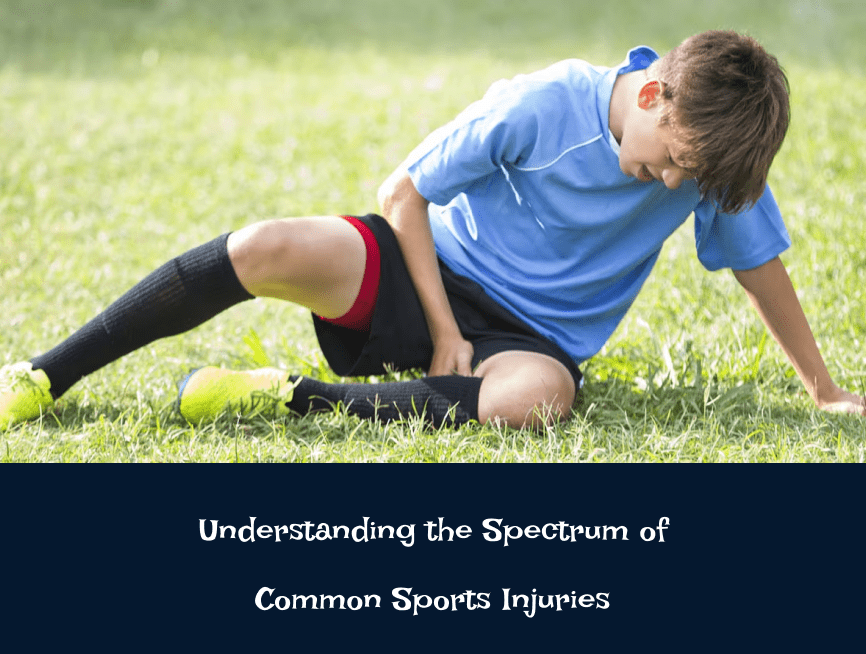Spectrum of Common Sports Injuries

Sports injuries are an inevitable part of physical activities, ranging from recreational play to competitive sports. At times, these injuries can hinder one’s performance and affect their overall well-being. Here, we delve into a detailed exploration of some of the most prevalent types of sports-related injuries, their characteristics, causes, and preventive measures.
Sprains and Strains: Differentiating the Two
Defining Sprains
Sprains primarily affect ligaments, the tough bands of tissue connecting bones within a joint. The sudden twisting or stretching of a joint beyond its normal range of motion leads to sprains. Ankle sprains, for instance, often result from sudden inward or outward rolling of the foot.
Understanding Strains
Strains, on the other hand, involve muscles or tendons and occur due to overstretching or tearing. Commonly observed in the hamstring or lower back, strains often arise from abrupt movements or excessive force exertion on the muscles.
Impact-Related Injuries: Concussions and Fractures
Concussions: The Invisible Threat
Concussions, characterized by a traumatic brain injury, occur due to a sudden blow or jolt to the head. These injuries often go unnoticed initially but can have severe consequences if not diagnosed and managed promptly. Symptoms may range from headaches and dizziness to cognitive impairment.
Fractures: A Break in the Continuity
Fractures encompass breaks or cracks in bones and occur due to sudden impacts or repetitive stress on the bones. Stress fractures, prevalent among runners, stem from overuse and repetitive motions, leading to small cracks in the bones.
Overuse Injuries: Tendonitis and Bursitis
Tendonitis: The Tendon’s Tale of Woe
Tendonitis involves the inflammation or irritation of tendons due to repetitive motions or strain. Activities like tennis or golf often lead to this condition, affecting areas like the elbows (tennis elbow) or wrists.
Bursitis: The Inflammation of Bursae
Bursitis refers to the inflammation of bursae, small fluid-filled sacs cushioning bones, tendons, and muscles near joints. Overuse or direct trauma may cause swelling and tenderness in affected areas like the shoulder or hip.
Prevention Strategies for Mitigating Sports Injuries
To minimize the risk of sports-related injuries, several preventive measures can be adopted:
Proper Warm-up and Cool-down: Engaging in adequate warm-up exercises before activities and gentle stretching afterward can enhance flexibility and reduce injury risks.
Appropriate Equipment Usage: Wearing protective gear and using the correct equipment suited to the sport or activity can significantly decrease injury likelihood.
Gradual Progression: Gradually increasing the intensity and duration of workouts helps in acclimatizing the body, reducing the chance of overuse injuries.
Professional Guidance: Seeking guidance from coaches or trainers for correct techniques and forms is crucial for injury prevention.
conclusion
In conclusion, understanding the various types of sports injuries, their causes, and preventive measures is pivotal in promoting safer and healthier athletic engagements. By implementing proper precautions and being aware of injury manifestations, individuals can significantly minimize the risk of succumbing to these common sports-related afflictions.
